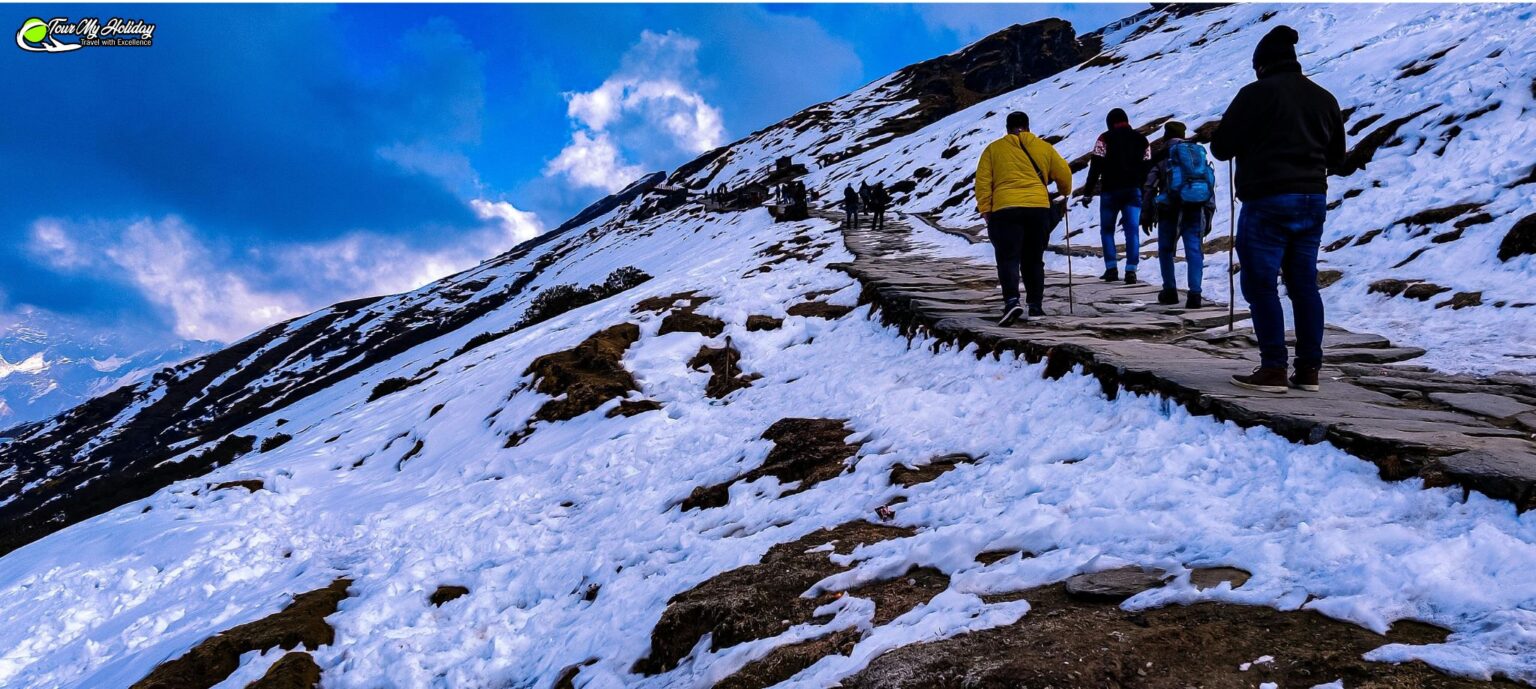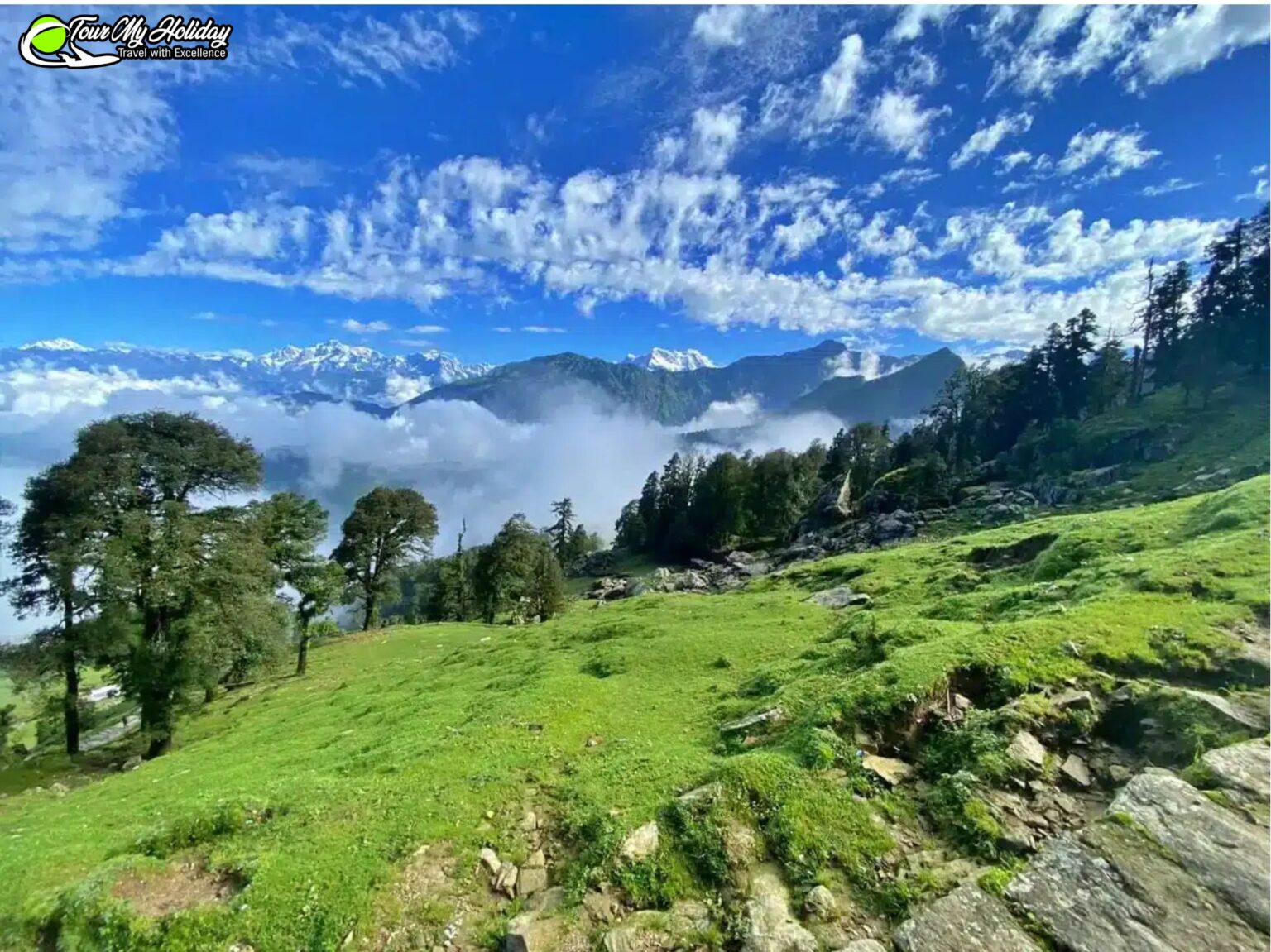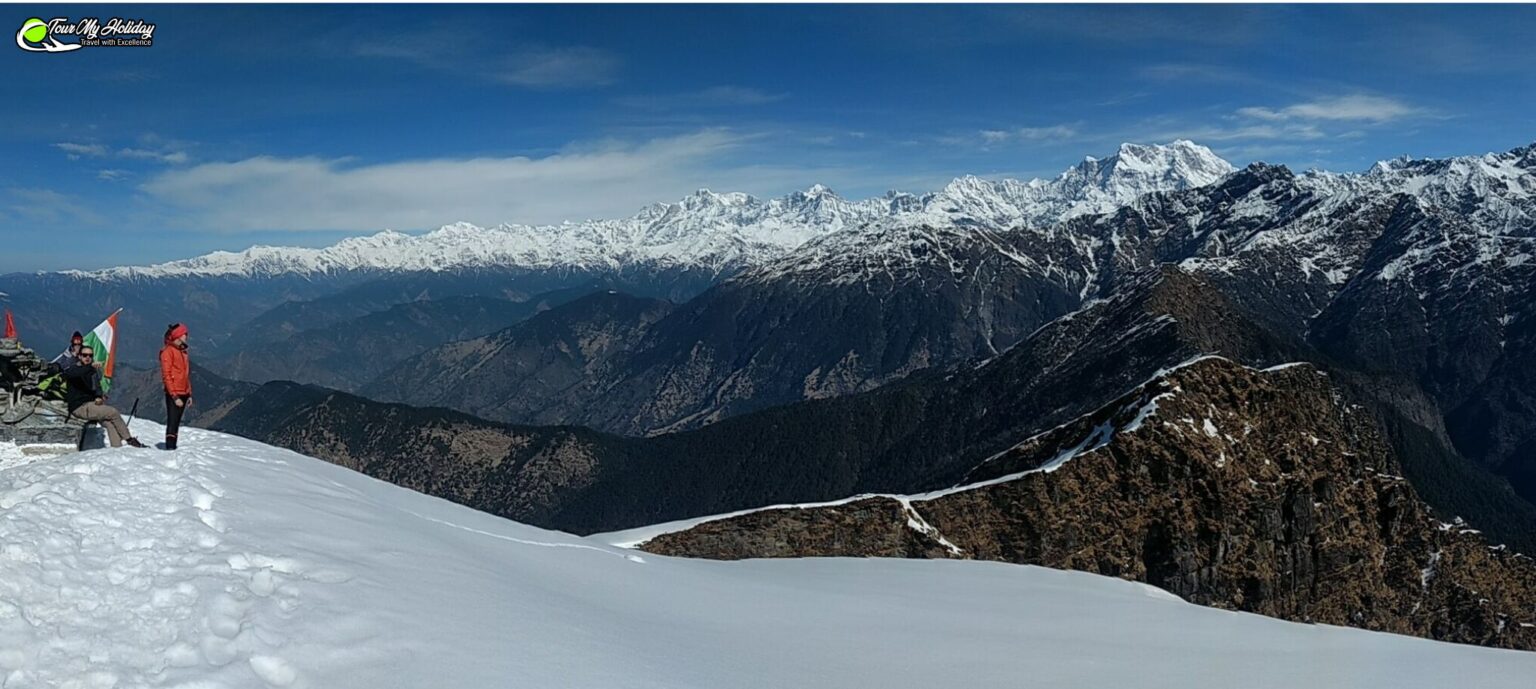Best Chopta Tour Package – Explore the Himalayas & Trekking
Published on March 27, 2025
Chopta Tour Package : Nestled in the lap of the majestic Garhwal Himalayas, Chopta stands as a pristine jewel among India's emerging eco-tourism destinations. Located at an elevation of approximately 2,680 meters (8,790 feet) above sea level, this picturesque hamlet in Uttarakhand's Rudraprayag district has earned its reputation as the "Mini Switzerland of India" for its breathtaking alpine meadows, dense rhododendron forests, and panoramic views of snow-capped peaks. Unlike its more commercialized counterparts, Chopta remains refreshingly untouched by mass tourism, offering visitors an authentic mountain experience that seamlessly blends natural splendor with spiritual significance.
The region's strategic location makes it a gateway to some of the most revered pilgrimage sites and challenging treks in the Himalayas. From its vantage point, travelers can marvel at the magnificent trinity of peaks – Nanda Devi, Trishul, and Chaukhamba – standing sentinel over the landscape. This unique positioning not only provides spectacular vistas but also serves as a crucial link between Kedarnath in the north and Badrinath in the west, making it an essential stop for pilgrims and adventure enthusiasts alike. Opting for a Chopta Tour Package from Delhi ensures a seamless journey, allowing travelers to explore this breathtaking destination with ease.
Why Chopta is a Must-Visit Destination for Nature Lovers
Nestled in the heart of Uttarakhand, Chopta has emerged as one of the most sought-after destinations for travelers seeking solace amidst nature. This picturesque hamlet offers an unparalleled blend of lush meadows, dense forests, and snow-capped peaks, creating a serene escape from the chaos of urban life. Unlike overcrowded tourist spots, Chopta retains its pristine charm, making it an ideal destination for those who crave tranquility and a deep connection with nature.
The region’s elevation of approximately 2,680 meters ensures breathtaking views of iconic peaks like Nanda Devi , Trishul , and Chaukhamba , creating a visual feast for visitors. The untouched beauty of Chopta is complemented by its rich biodiversity, spiritual significance, and adventurous treks, offering something for every kind of traveler. Whether you’re a nature enthusiast, a spiritual seeker, or an adventure lover, Chopta promises an experience that is both enriching and unforgettable.
What truly sets Chopta apart is its accessibility combined with untouched beauty. Located just 65 kilometers from Rudraprayag , it serves as a gateway to spiritual sites like Tungnath Temple and adventure trails such as the Chandrashila Trek . Whether you’re a nature enthusiast, a spiritual seeker, or an adventure junkie, Chopta caters to all, offering experiences that are both enriching and memorable.
Unveiling the Treks of Chopta: Adventure Amidst the Himalayas
Chopta is a paradise for trekkers, boasting some of the most scenic trails in the Himalayas. The Chandrashila Trek , arguably the most popular, takes adventurers through dense rhododendron forests and alpine meadows before culminating at a summit that offers panoramic views of the Himalayan range. This moderate-difficulty trek spans approximately 14 kilometers round trip, passing through the revered Tungnath Temple , the highest Shiva temple in the world.
For those seeking a gentler experience, the Deoria Tal Trek is a perfect choice. Covering about 12 kilometers round trip, this trail leads to a serene glacial lake that mirrors the majestic peaks surrounding it. The crystal-clear waters of Deoria Tal create picture-perfect moments, especially during sunrise and sunset. Another hidden gem is the Mayali Pass Trek , a challenging three-day expedition that takes you through remote valleys and high-altitude meadows. This trek offers solitude and a chance to witness rare flora and fauna, making it a favorite among seasoned trekkers.
Each trek in Chopta offers a unique perspective of the region’s natural beauty. Whether you’re scaling the heights of Chandrashila or enjoying the tranquility of Deoria Tal , these trails promise unforgettable adventures in the lap of the Himalayas.

Essential Tips for a Memorable Chopta Experience
Planning a trip to Chopta requires attention to detail to ensure a seamless and enjoyable experience. Timing is crucial—early mornings offer the clearest views of the Himalayan peaks before clouds roll in. For trekkers, starting early not only maximizes visibility but also helps avoid afternoon rains during the monsoon season. Additionally, visiting on weekdays can help you escape the weekend rush, especially during peak seasons like April to June and September to November.
Accommodation options in Chopta cater to diverse preferences. Homestays provide an authentic cultural experience, allowing you to interact with locals and savor traditional Garhwali cuisine. Mid-range travelers might prefer guesthouses or lodges, which offer basic amenities while maintaining proximity to nature. Regardless of your choice, booking accommodations well in advance is essential, particularly during peak seasons when availability is limited.
Transportation logistics also play a vital role in your journey. Hiring local drivers familiar with the narrow, winding roads leading to Chopta is advisable. Shared jeeps operate regularly from Ukhimath and Rudraprayag , providing cost-effective travel options. Once in Chopta , walking becomes the primary mode of transportation, especially for accessing trekking trails and nearby attractions. Renting sturdy trekking shoes locally is recommended for those without proper hiking gear, as the rocky and uneven paths can be challenging in regular footwear.
Safety considerations should remain a priority throughout your visit. Always carry adequate warm clothing, as temperatures can drop suddenly, especially at higher altitudes. A basic first-aid kit, including medication for altitude sickness, is essential for trekkers. When venturing on hikes, maintain communication with your accommodation provider or local guide, and always inform someone about your planned route and expected return time. Mobile network coverage can be patchy in certain areas, so carrying a portable power bank and downloading offline maps is highly recommended.

Discovering Chopta’s Rich Flora and Fauna
Chopta is a haven for biodiversity, hosting an impressive array of plant and animal species. The region’s forests are home to over 25 species of rhododendrons, with Rhododendron arboreum painting the hillsides in vibrant reds and pinks during spring. Ancient oak and deodar cedar trees dominate the landscape, providing vital habitats for numerous species. Beneath the forest canopy, medicinal herbs like Himalayan yew and Kutki thrive, showcasing the region’s ecological significance.
The wildlife in Chopta is equally captivating. Falling within the buffer zone of the Kedarnath Wildlife Sanctuary , the area shelters endangered species such as the elusive snow leopard , Himalayan black bear , and common leopard . Birdwatchers delight in spotting over 300 avian species, including the striking Himalayan monal , the state bird of Uttarakhand, and rarities like the Koklass pheasant and western tragopan . Smaller mammals like musk deer , barking deer , and Himalayan langur also call the region home, adding to its biological richness.
Seasonal variations influence the visibility and behavior of Chopta ’s wildlife. Spring brings increased activity as animals emerge from winter hibernation, while summer witnesses abundant birdlife and blooming vegetation. Autumn marks the migration period, with some species moving to lower altitudes while others prepare for winter. Even in harsh winters, hardy species adapt to the snow-covered landscape, creating unique opportunities for observing survival strategies in action.
The Ideal Time to Visit Chopta: Experiencing Nature’s Seasons
The best time to visit Chopta depends on the type of experience you seek. Spring, spanning March to May, is the most popular season, transforming the valleys into vibrant gardens of wildflowers and rhododendrons. Daytime temperatures hover between 15°C to 20°C, while nights remain cool at around 5°C to 10°C. This season is perfect for both beginners and experienced trekkers, offering excellent visibility of the surrounding peaks and comfortable conditions for camping.
Summer, from June to mid-July, coincides with the monsoon season. While occasional afternoon showers occur, the rainfall enhances the region’s natural beauty, turning forests emerald green and filling streams with crystal-clear water. Temperatures remain pleasant, ranging from 18°C to 25°C during the day, though humidity levels increase. This period is favored by photographers capturing lush landscapes and botany enthusiasts studying the region’s diverse flora at its peak growth.

Autumn, stretching from mid-September to November, presents another prime window for visiting Chopta . The post-monsoon period clears the air, offering exceptional visibility of the Himalayan ranges. Daytime temperatures average between 10°C to 18°C, while nights can dip to 0°C to 5°C, creating perfect conditions for viewing snow-capped peaks against clear blue skies. This season also coincides with major Hindu festivals, adding cultural richness to the natural beauty as local communities celebrate with traditional music and rituals at Tungnath Temple .
Winter, from December to February, transforms Chopta into a magical snow kingdom. Daytime temperatures rarely exceed 5°C, while nighttime readings can plummet to -10°C. The snow-covered landscape creates breathtaking vistas, especially from Chandrashila Peak , but treks become more challenging and require experience with winter hiking. Some high-altitude trails may be inaccessible, and accommodations might be limited, but those who brave the cold are rewarded with unparalleled solitude and the chance to experience Chopta ’s wilderness at its most pristine.
Crafting Your Perfect Chopta Tour Package
Designing an ideal Chopta tour package involves balancing adventure and comfort to create a memorable experience. A comprehensive three-night, four-day itinerary typically proves optimal for most travelers, allowing sufficient time to explore the region’s highlights without feeling rushed. Begin your journey from Rishikesh or Haridwar , where you can board private vehicles or shared taxis to Ukhimath , breaking the journey for lunch and acclimatization. Arrive in Chopta by late afternoon, check into your pre-booked accommodation, and spend the evening exploring the local village.
Day two should focus on the iconic Chandrashila Trek , beginning early at dawn. Allocate six to seven hours for the round trip, accounting for photography stops and brief rest periods. Pack a picnic lunch to enjoy at Tungnath Temple , combining spiritual exploration with physical activity. Return to Chopta by late afternoon, leaving time for relaxation and perhaps a short evening walk through the nearby forests. Consider scheduling a local cultural program or storytelling session with village elders to deepen your understanding of Garhwali traditions.
The third day presents an excellent opportunity to explore alternative treks or nearby attractions. The Deoria Tal excursion makes for a perfect half-day adventure, allowing you to experience the region’s natural beauty without strenuous effort. Alternatively, arrange a guided nature walk through the Kedarnath Wildlife Sanctuary buffer zone, focusing on bird watching or identifying medicinal plants. Afternoon free time can be utilized for yoga sessions, meditation in the meadows, or simply enjoying the serene mountain views from your accommodation’s verandah.

Logistical arrangements play a crucial role in ensuring a stress-free experience. Pre-book all transportation services, including transfers between major transit points and local transport requirements. Arrange for experienced local guides who can provide valuable insights into the region’s ecology and culture while ensuring safety during treks. Consider opting for packages that include meals prepared with fresh, local ingredients, supporting sustainable tourism practices while enjoying authentic Himalayan cuisine.
For those seeking a more luxurious experience, several premium operators offer customized packages featuring luxury tents with attached bathrooms, gourmet dining options, and personalized service. These packages often include additional activities such as photography workshops, wellness sessions, or cultural immersion programs. Regardless of budget, ensure your package includes comprehensive insurance coverage, emergency evacuation provisions, and flexible cancellation policies to accommodate unforeseen circumstances.
Embracing Chopta’s Timeless Allure
Chopta transcends the conventional boundaries of a typical hill station destination, offering visitors an unparalleled opportunity to connect with nature, culture, and self. Its remarkable ability to preserve traditional Himalayan values while embracing sustainable tourism practices creates an environment where authentic experiences flourish. The region’s carefully maintained balance between development and conservation ensures that each visitor contributes positively to the local ecosystem and community, fostering a sense of responsibility and stewardship that extends beyond their stay.
From the warmth of local hospitality to the breathtaking grandeur of its natural landscapes, Chopta invites travelers to participate in a living tapestry of cultural heritage and ecological wonder. Whether you’re scaling the heights of Chandrashila , marveling at the reflections in Deoria Tal , or simply soaking in the serenity of the valley, Chopta promises memories that linger long after your journey ends. As the region continues to gain recognition among discerning travelers, its future shines brightly with promise, proving that modern tourism can coexist harmoniously with nature’s timeless rhythms and cultural traditions.

Frequently Asked Question(FAQ) About Chopta
What is the best time to visit Chopta?
The best time to visit Chopta is from March to June for pleasant weather and from December to February for a snow-covered landscape, perfect for winter trekking.
How can I reach Chopta from Delhi?
You can reach Chopta from Delhi by taking a train or flight to Haridwar or Dehradun, followed by a road journey via taxi or bus. Many Chopta Tour Packages from Delhi include transportation.
What are the top trekking routes in Chopta?
The most popular treks in Chopta are the Chopta Tungnath Trek, Chandrashila Summit Trek, and Chopta Chandrashila Trek from Delhi, offering stunning Himalayan views.
Is Chopta suitable for beginners in trekking?
Yes, Chopta is ideal for beginners. Treks like the Tungnath Temple Trek and Chopta Tungnath Trek from Delhi are relatively easy and rewarding with breathtaking views.
What are the accommodation options in Chopta?
Chopta offers various stay options, including budget guesthouses, campsites, and eco-lodges. Many Chopta Tour Packages include comfortable accommodations.
What are the must-visit places in Chopta?
Top places to visit include Tungnath Temple, Chandrashila Summit, Deoria Tal, and lush meadows that offer breathtaking views of the Himalayas.
What kind of adventure activities can be done in Chopta?
Besides trekking, visitors can enjoy camping, birdwatching, photography, and snow trekking in winter, making Chopta Tour Packages ideal for adventure seekers.
Do I need a permit to trek in Chopta?
No special permit is required for Chopta Chandrashila Trek, but some forest areas may have entry fees, which are usually included in Chopta Tour Packages.
Is Chopta safe for solo travelers?
Yes, Chopta is safe for solo travelers. The well-marked trails, friendly locals, and available Chopta Tour Packages ensure a hassle-free experience.
What should I pack for a Chopta trip?
Pack warm clothing, trekking shoes, rain gear, first-aid, and essentials like a torch and water bottle, especially if you're opting for a Chopta Tour Package from Delhi.